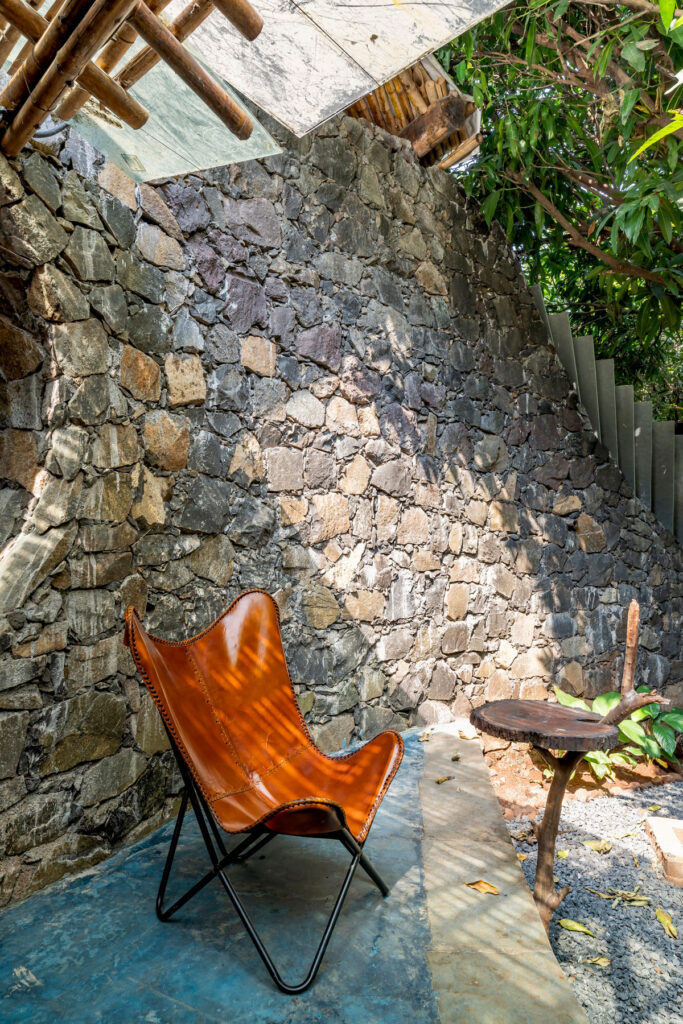Random rubble masonry foundation
Table of contents
What is random rubble masonry foundation?
Random rubble masonry foundation is ancient stone foundation method where rough, uneven stones are used to make the foundations. It is cost effective and environment friendly construction technology as it does not require energy intensive materials like cement and steel. Structures of ground plus one or two storey can be built using random rubble foundation, depending on soil condition. Since primary material used is stone, the foundation is very strong and durable.
Construction of random rubble masonry foundation
Marking
Mark the centre line of the foundation as per design. Also mark outer edges for excavation.
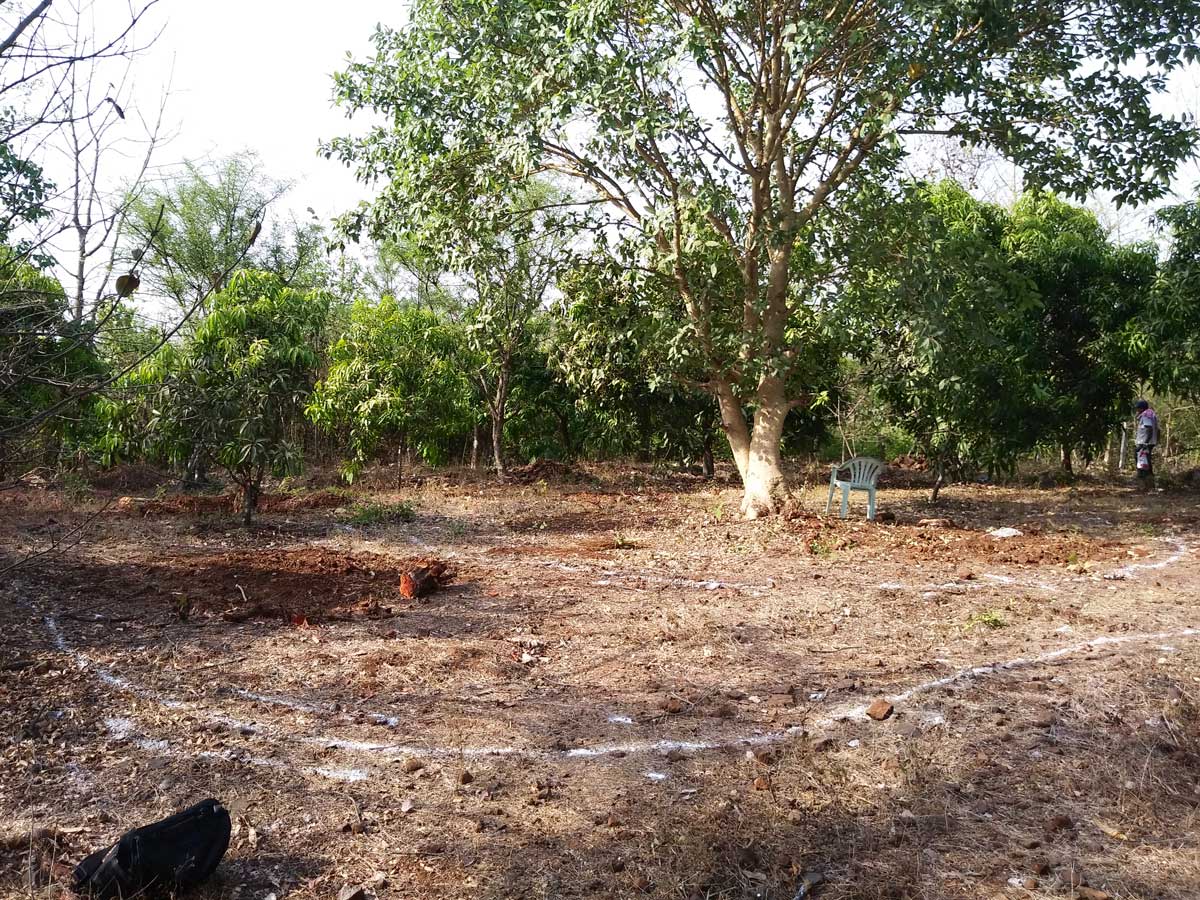
Excavation
After marking the wall positions on site, the soil is excavated to make trench. Width of trench is usually 2 feet while the depth depends on soil condition. Excavation should be done till hard strata are found.
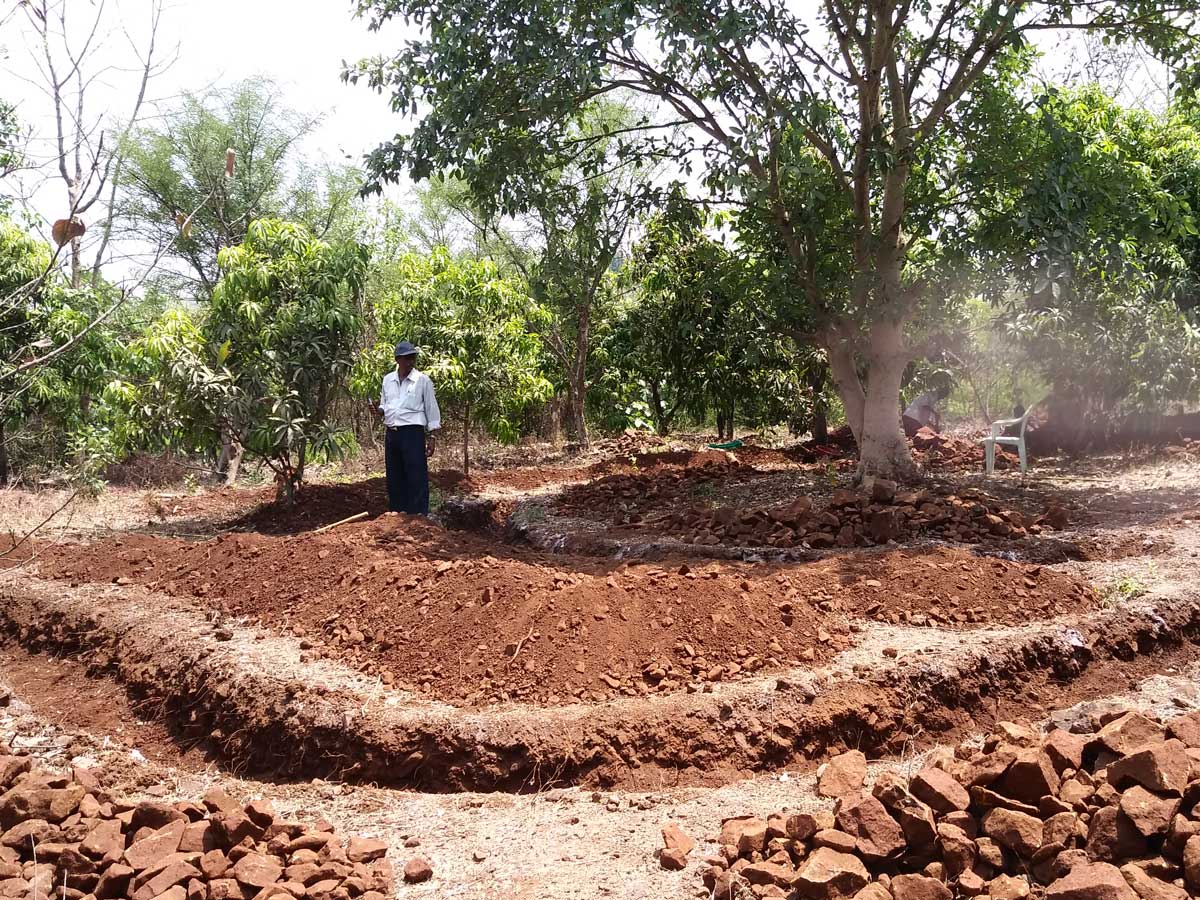
Laying stones
We start with laying first layer of small stones, which forms the flat base surface to put big stones. In next layer, put the big stones on both edges of trench such that they overlap with each other. Fill the gap in-between with smaller stones or gravels. This is called stone ‘hearting’ which is important since it helps keeping stones in place. In next layer, put the stone to cover the break between two stones below it. This overlap is necessary to break the joint.
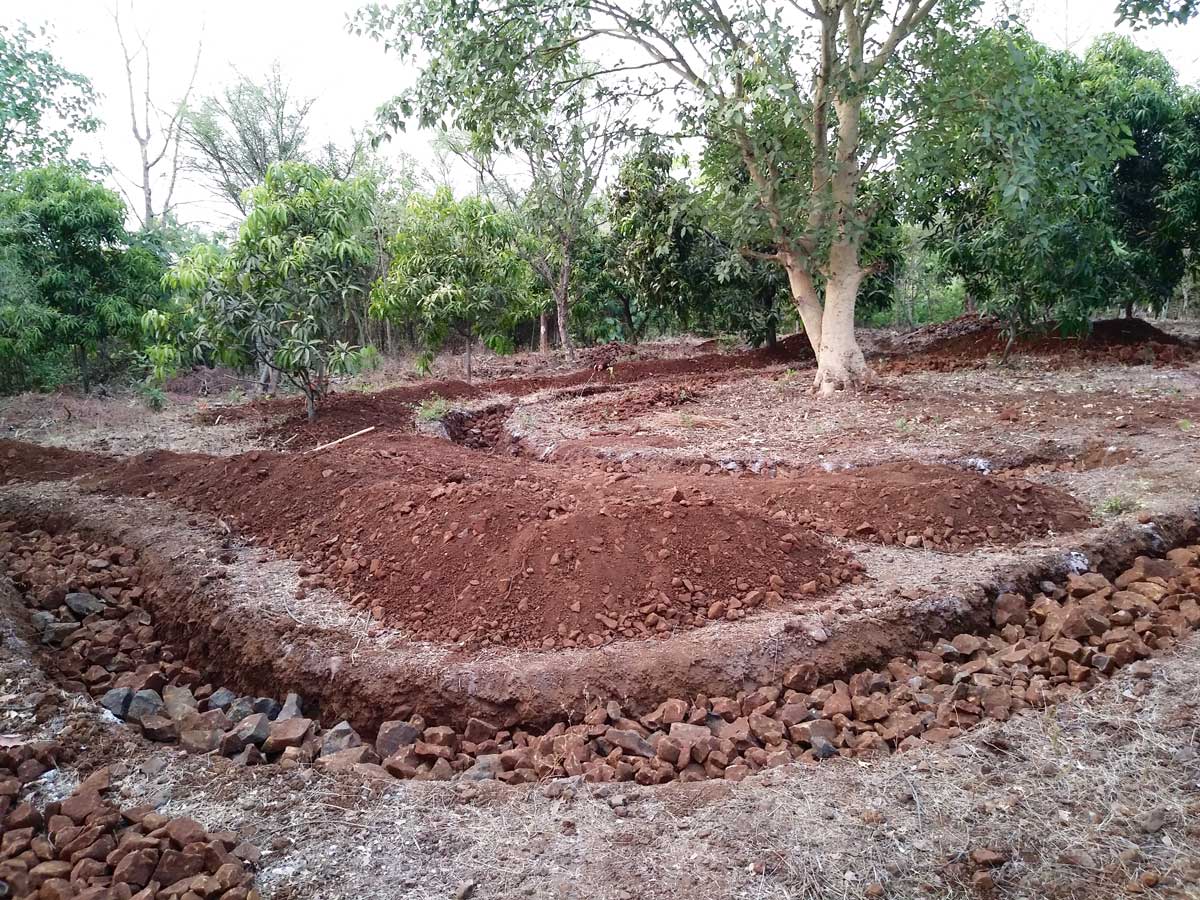
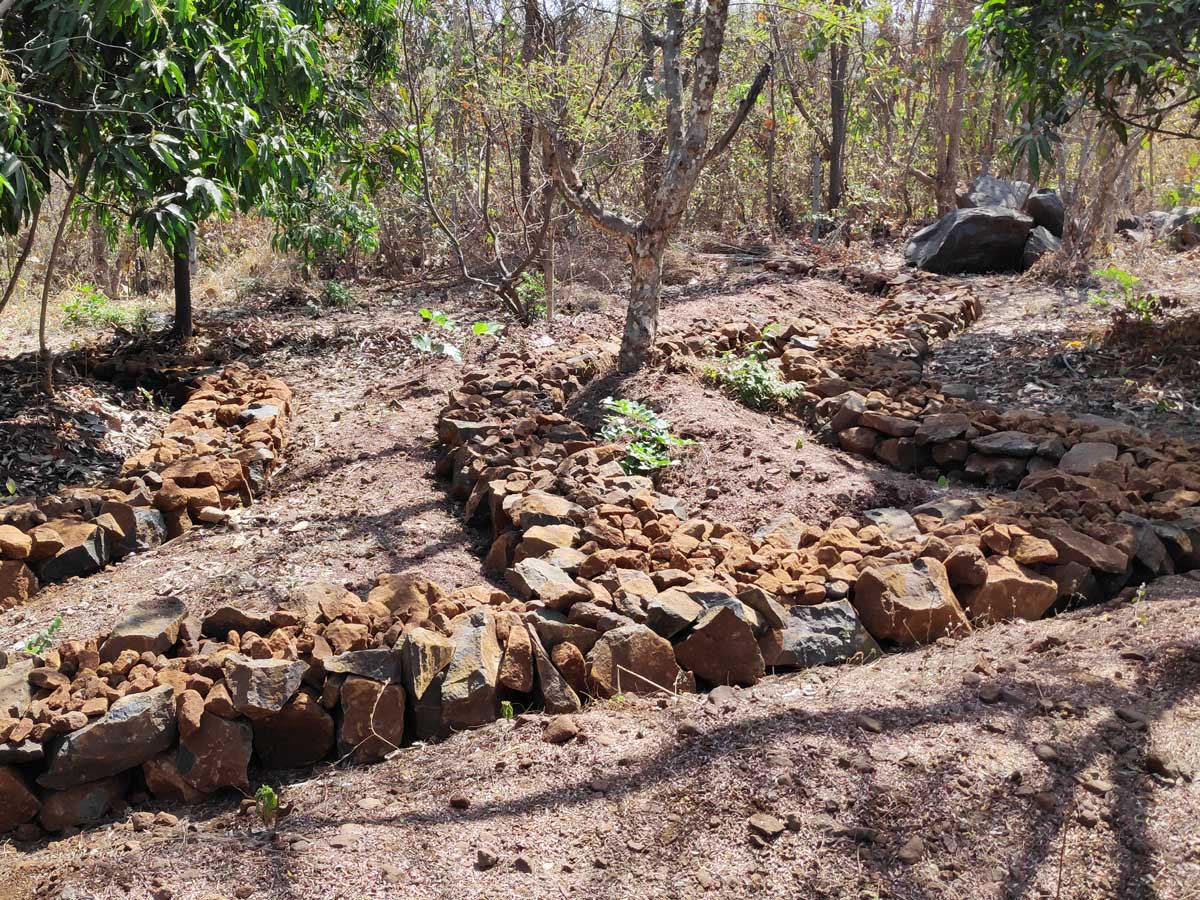
Mortar
Random rubble masonry foundations done without mortar are called dry random rubble foundations. The gaps between stones are filled with smaller stones. Cement mortar is used widely. To avoid using cement, we have used mud + lime mortar. It consists of – 1 part mud, 1 part surkhi (brick powder), 1/2 part lime and 1/10 part turmeric powder. Click here for detail of mud + lime mortar. We poured the mortar paste in such a way that it filled all the gaps between stones.
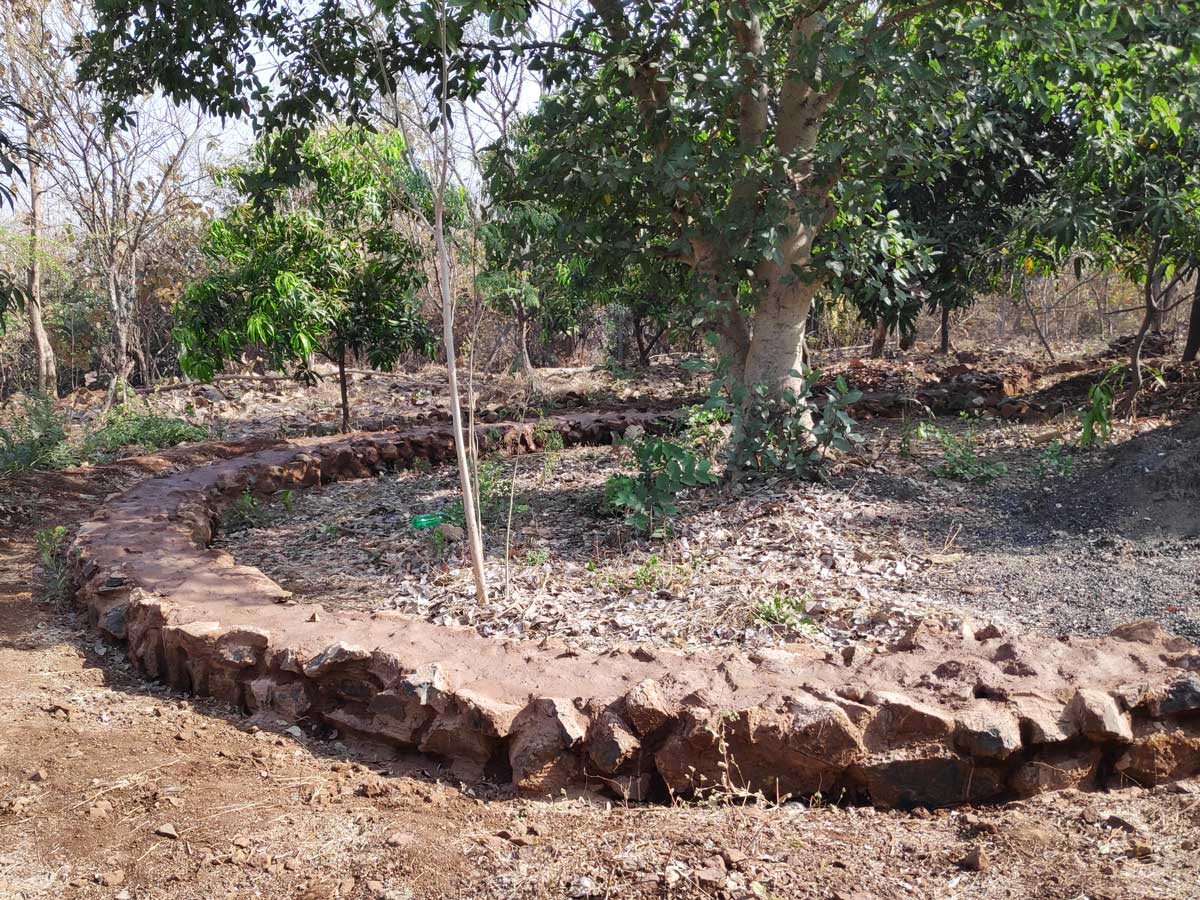
Advantages of using random rubble foundation
- Random rubble masonry foundation is environment friendly construction technology since as it does not require energy intensive materials like cement and steel.
- It is cost effective since the stones used are not dressed. Stones are used in the rough, uneven shape.
- Dressing the stone is labor intensive and adds to cost.
- It is very strong, durable and weather resistant.
